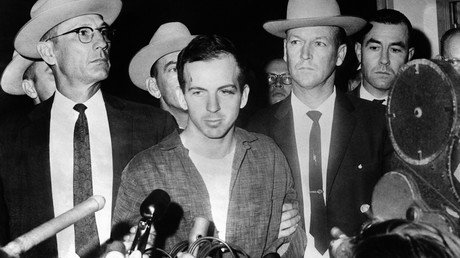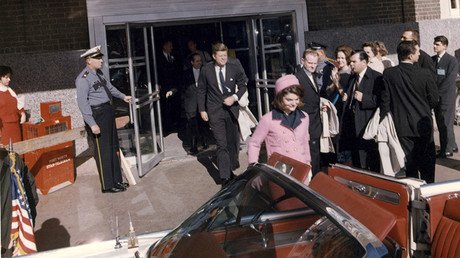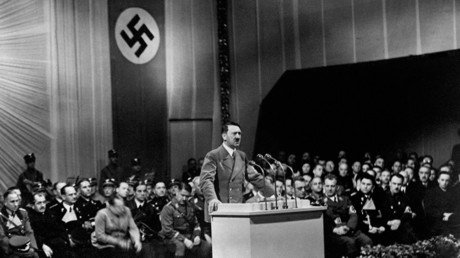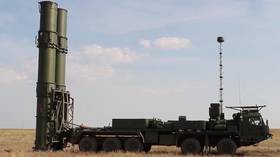Who killed JFK? The various theories behind the Kennedy assassination
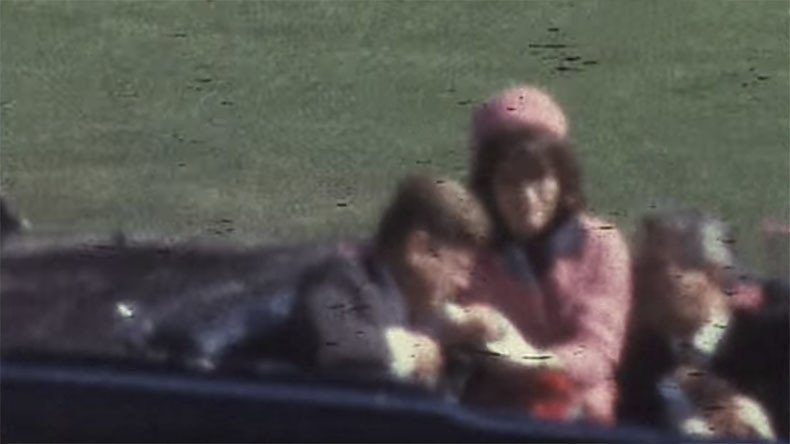
Just hours ahead of the disclosure of classified documents on one of the defining moments of 20th-century US history – the assassination of President John F. Kennedy – RT takes a look at some of the main theories regarding what really happened.
Ever since John F. Kennedy was gunned down by Lee Harvey Oswald on November 22, 1963 while visiting Dallas, Texas, there has been endless speculation around the circumstances of the 46-year-old’s death.
Here, we take a look at what different people say happened on that tragic day.
Lone wolf – the official version
Following the tragic event, the Warren Commission was set up by President Lyndon B. Johnson to shed light on Kennedy’s murder. In 1964, the commission concluded that Kennedy was killed by a lone assassin – former US Marine Lee Harvey Oswald.
The shooter fired three shots from a sixth-floor window in the Texas School Book Depository and two bullets reached his target – President Kennedy – and wounded Texas Governor John Connally, who was travelling in the car with Kennedy.
Although the Warren Commission concluded that Oswald was not part of any conspiracy, the findings were criticized for allegedly ignoring some witness accounts and for the fact that the CIA and FBI, who assisted the investigation, withheld some information.
A second shooter?
Over a decade later, Kennedy’s death was once again investigated – this time by the US House of Representatives Select Committee on Assassinations (HSCA). Established in 1976, the committee issued its final report in 1979, which agreed with the Warren Commission’s findings, though it added there was a “high probability” that two gunmen fired at Kennedy.
The HSCA also found that Kennedy was “probably assassinated as the result of a conspiracy,” although it did not go into details.
Communist conspiracies
It’s no secret that Oswald visited the Soviet Union and attempted to obtain citizenship due to his Marxist beliefs. After being denied, however, he grew disillusioned with the USSR, which seems to have provided the grounds for alleged Soviet involvement in Kennedy’s assassination.
Several months before the assassination, Oswald reportedly visited the Cuban and Soviet embassies in Mexico to re-apply for a Soviet visa, but failed.
Amid speculation of a US plot to kill Cuban leader Fidel Castro, this added fuel to the theory that Oswald colluded with the Cuban government to kill Kennedy.
This was dismissed by the Warren Commission, however, with the report stating that neither the Soviet Union nor Cuba were “involved in the assassination of President Kennedy.”
CIA conspiracy
As tensions with communist Cuba continued to grow, the CIA attempted to oust Castro, which included their ill-fated Bay of Pigs operation.
Despite Oswald having no connections with the CIA, according to the Warren Commission and the HSCA, some theories emerged claiming that the agency wanted revenge for the failed operation, which it blamed on Kennedy, and for the president’s alleged plan to cut its budget.
Often presented as “proof” is the fact that CIA agent E. Howard Hunt and US soldier Frank Anthony Sturgis were among three men, also known as the “three tramps,” spotted in photographs being escorted by police near the Texas School Book Depository.
Hunt was involved in the Bay of Pigs operation, while Sturgis was an anti-Castro activist.
Others says that Oswald himself was a CIA agent, although this, and the involvement of Hunt and Sturgis, was also dismissed by the Warren Commission.
Umbrella man
Witnesses spotted what they said was a “suspicious” man holding an umbrella as Kennedy’s motorcade was driving by, despite it being a clear, sunny day. One theory is that ‘umbrella man’ fired a tranquilizer at the president, signaling to the shooter to fire the kill shot.
The man was later identified as Louie Steven Witt, who explained that the umbrella was a form of protest aimed at Kennedy’s father Joseph, and his support for British Prime Minister Neville Chamberlain.
Chamberlain, who was known for carrying an umbrella, was seen as “appeasing Hitler” in the lead-up to World War II, and Joseph Kennedy supported Chamberlain.
